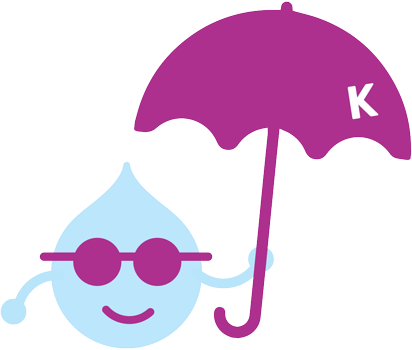How much Vitamin D is required, and what supplements are best?
The American Academy of Pediatrics and the Canadian Pediatric Society say babies and children should get at least 400-600 international units (IU) of vitamin D per day.
Most babies, kids, and adults do not get this much vitamin D.
Vitamin D Deficiency
When it comes to vitamin D, getting the right amount of this essential nutrient is important for keeping your body healthy.
Vitamin D helps with bone health and may also help prevent some types of cancer.
Symptoms from a lack of sufficient amounts include:
- muscle weakness
- pain
- fatigue
- or depression
It’s possible to get enough by looking into certain foods that have been fortified with it and taking supplements made specifically for vitamin D, in addition to carefully planned sunlight exposure times throughout the day should suffice.

Best Vitamin D Supplements
Vitamin D deficiency is a common problem throughout the country, and people rely on supplements during the winter months when sunlight exposure becomes limited.
However, these supplements cannot fully replace sunshine as they only contain less than half of what you would get from direct sun exposure.
Some foods — such as fish, dairy products like milk or yogurt that are fortified with vitamin D, and cereal — all contribute to your body’s intake of this essential nutrient.
The best way for most people to absorb enough vitamin D remains through unprotected sun exposure. However, if a geographical location or an underlying health condition prevents you from absorbing it directly in adequate amounts, taking a supplement may be necessary.
If you choose to go the supplement route, Clifford recommends taking around 400-800 IU of vitamin D3 (cholecalciferol) per day.
“Vitamin D3 is the form that is already stored in our body,” says Clifford. “Also, take it with a healthy fat like sliced avocado because this will help absorb it.”
Meghan Sedivy, RD at Fresh Thyme Farmers Market, suggests:
- Garden of Life Vitamin Code RAW D3
- Solaray Vitamin D3
- Nature’s Way Vitamin D 3
(These are all Vegan and Gluten-free.)
Is Vitamin D from the Sun? Is Vitamin D in Food Enough?
Vitamin D can be ingested in food, and there is vitamin D in milk, or we can get it from the sun. Unfortunately, many kids and adults do not get enough direct sun exposure to natural sun-related vitamin D.
Parents often keep their kids out of the sun or apply sunscreen liberally to avoid sun damage, which we encourage.
We want to prevent skin damage and the risk of skin cancer, though this minimizes vitamin D absorption from the sun.
Why Vitamin D is Important
Vitamin D allows our body to absorb calcium and phosphorus, which are critical to building strong bones.
Vitamin D deficiency can lead to rickets, a disorder that leads bones to become soft and not properly formed.
Kids at the highest risk of rickets are toddlers or babies less than two who are exclusively breastfed and do not receive vitamin D supplementation through vitamin D baby drops.
Even babies receiving formula need vitamin d drops for babies if they receive less than 32 ounces of formula per day.
How Much Vitamin D Do You Need?
There are plenty of options for vitamin D dietary supplements, with several vitamin D’s out there. In addition, there are chewable multivitamins with 400 IU of vitamin D, vitamin d drops for babies, liquid form, and pills you can swallow.
I prefer the one drop = 400 or 600IU variety as there are often tons of added ingredients such as sugar and aspartame in other multivitamins.
Most children that eat a variety of foods don’t require a multivitamin with other vitamins.
For the drop versions, parents can drop it directly into the child’s mouth, on the mother’s nipple, on a clean finger, or on a pacifier, or added directly in a bottle of milk.
How Much is too Much Vitamin D?
Make sure that you keep the vitamin D baby drops away from curious hands. Overdose of a multivitamin can cause severe damage to a child.
They can be tempting to kids, and we want to avoid an accidental overdose. Less than 50,000 IU will not likely cause harm.
The current daily recommended amount of vitamin D is 600 IU for adults under the age of 70 and 800 IU for older adults.
Up to 4,000 IU/day has been shown not to cause toxicity, but there are no known benefits from doses higher than 10,000IU daily.
Vitamin D in Food
Some people can ingest enough vitamin D from food sources such as vitamin D in milk.
I recommend finding a balance with feeding vitamin D in food with some supplementation. Look for foods with vitamin D added, such as vitamin D in milk, soy products, and orange juice.
Nutritionists recommend eating tuna, salmon, mackerel, and other fatty fish foods to get vitamin D.
They also say that it’s wise to eat fortified foods like dairy products (like milk), orange juice, or cereal to increase your intake of this essential nutrient.
Cheese is another excellent source of Vitamin D, as are egg yolks, although the amount varies depending on how they’re cooked.”
Vitamin D in Milk
One cup of dairy milk or soy milk has about 100 IU.
Unless your child is drinking four full cups or 1 liter of milk per day, additional vitamin D-containing foods or supplementation is needed to reach the goal of 400 IU a day, and we like to er towards 600 IU a day.
Vitamin D is found naturally in eggs, oily fish, liver, beef, and cheese.
However, your child will require large amounts of these foods to get the recommended daily dose of vitamin D, such as 4 oz of fatty fish a day, for example.
Milk is a good source of calcium, which you need to absorb vitamin D. Vitamin D helps your body maintain healthy bones and teeth by helping the absorption process of calcium to bone tissue.
FAQ – Frequently Asked Questions
How Much Vitamin D Do You Need?
Breastfed babies should receive 400 IU of vitamin D per day. Begin supplementing in the first month of life. Formula-feeding babies should receive 400 IU per day of vitamin D if they are not receiving 32 oz of formula per day. Older children and adults should receive at least 600-1000 IU per day of vitamin D. Ideally, this comes from vitamin D-containing foods and supplementation.
Is there much vitamin D in milk?
One cup of cow’s milk or alternative has around 100 IU of vitamin D.
Who requires additional vitamin D?
If your child has a health condition that predisposes them to vitamin D deficiency or calcium loss, please ask your physician to determine how much vitamin D they should take.
Does Vitamin D promote healthy bones?
Vitamin D regulates calcium absorption, and it is necessary for strong bones.
Without Vitamin D, our bodies cannot effectively absorb calcium which causes bone weakness such as rickets (which causes skeletal deformities like bowed legs).






































